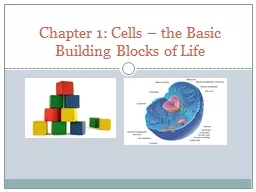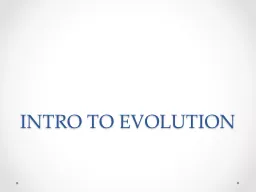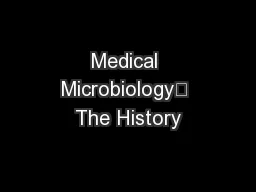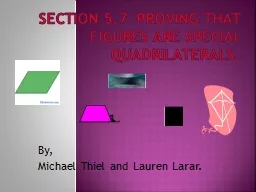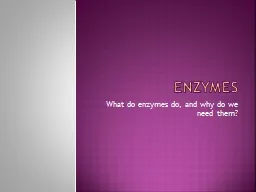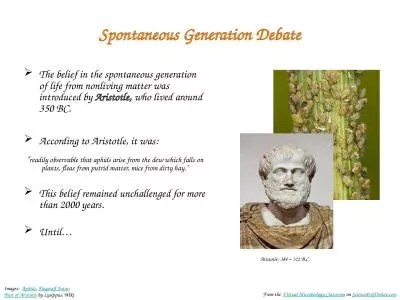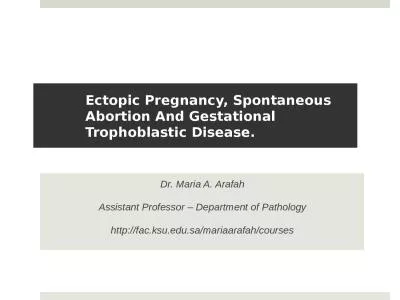PPT-Spontaneous generation Proving and disproving
Author : lindy-dunigan | Published Date : 2018-02-25
The Origin of Life 350 BC Aristotle Greek He was a philosopher He can about his ideas by thinking not experimenting Life arose from non living matter by spontaneous
Presentation Embed Code
Download Presentation
Download Presentation The PPT/PDF document "Spontaneous generation Proving and dispr..." is the property of its rightful owner. Permission is granted to download and print the materials on this website for personal, non-commercial use only, and to display it on your personal computer provided you do not modify the materials and that you retain all copyright notices contained in the materials. By downloading content from our website, you accept the terms of this agreement.
Spontaneous generation Proving and disproving: Transcript
Download Rules Of Document
"Spontaneous generation Proving and disproving"The content belongs to its owner. You may download and print it for personal use, without modification, and keep all copyright notices. By downloading, you agree to these terms.
Related Documents


